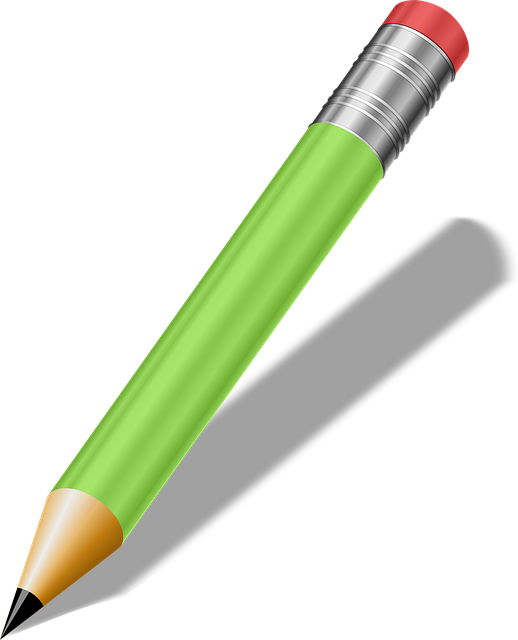Graphic Design is a powerful marketing tool that captures global audiences. Skilled designers transform elements like logos, typography, and imagery into instant brand ambassadors. In a competitive digital landscape, well-crafted graphics differentiate companies, influence purchasing decisions, and shape brand perception. Effective Graphic Design enhances brand recognition, engages viewers, and communicates messages clearly, fostering meaningful connections with target markets. Advanced tools and software empower designers to create exceptional visuals for diverse mediums, staying ahead in the evolving industry.
“Unleash the power of visual storytelling with Marketing and Advertising Graphic Design. In today’s competitive landscape, impactful designs drive brand recognition and engagement. This comprehensive guide explores the art and science behind creating compelling visuals. From understanding visual communication’s role in marketing to mastering color, typography, and layout, you’ll discover key elements for success. We delve into brand identity development, digital banner design strategies, and balancing aesthetics with message clarity. Plus, find out which tools and software streamline modern graphic design workflows.”
Understanding Visual Communication in Marketing

Visual communication plays a pivotal role in marketing and advertising, with graphic design serving as the cornerstone. Effective graphic design transcends language barriers, conveying messages, emotions, and brand identities instantly. It involves crafting visually appealing elements such as logos, layouts, typography, and imagery that capture attention, engage audiences, and foster memorable connections.
In today’s digital landscape, understanding visual communication is more critical than ever. With countless brands vying for consumer attention, a well-designed graphic can set a company apart, leaving a lasting impression. It influences purchasing decisions, shapes brand perception, and drives engagement across various marketing channels. By leveraging the power of Graphic Design, businesses can effectively communicate their unique value propositions and forge meaningful relationships with their target audiences.
Key Elements of Effective Graphic Design for Ads

Effective graphic design plays a pivotal role in captivating audiences and delivering powerful marketing messages. When it comes to advertising, visually appealing designs can significantly enhance brand recognition and engagement. The key elements that contribute to successful graphic design for ads include a strong visual hierarchy, where important elements are guided by negative space and contrasting colors to draw the viewer’s attention. Typography is another critical aspect; choosing the right font and setting it at optimal sizes improves readability while conveying the desired tone.
Consistency in branding is essential, ensuring that the design aligns with the brand’s identity guidelines. Incorporating high-quality visuals, whether images or illustrations, adds depth and relatability to the ad. Effective graphic design also considers the target audience’s preferences and cultural nuances to create visually appealing content that resonates with viewers.
The Role of Color and Typography in Capturing Attention

In Graphic Design, color and typography are powerful tools that can significantly impact a marketing or advertising campaign’s success in capturing attention. The strategic use of colors can evoke emotions, convey brand identity, and create visual hierarchy on a design. Warm tones might stimulate energy and urgency, while cool hues often inspire calmness and sophistication. Typography, on the other hand, is an art form that selects the right font to enhance readability and engage viewers. A bold, unique typeface can instantly make a brand memorable, whereas a clean, minimalist choice can convey elegance and simplicity.
Combining these elements effectively allows designers to create visually appealing content that draws in audiences. By understanding color theory and typography fundamentals, Graphic Design professionals can craft captivating visuals that not only grab attention but also leave a lasting impression, thereby increasing the effectiveness of marketing and advertising efforts.
Creating Memorable Brand Identities Through Design

In the realm of marketing and advertising, graphic design plays a pivotal role in shaping brand identities that resonate with audiences. A well-crafted visual identity goes beyond aesthetics; it tells a story, evokes emotions, and establishes a unique presence in a crowded market. Designers use principles like color theory, typography, and composition to create logos, icons, and other visual elements that serve as the cornerstone of a brand’s image.
Memorable brand identities are not just visually appealing; they are also consistent across various touchpoints. This consistency ensures that customers can instantly recognize and connect with a brand, fostering trust and loyalty. By integrating brand values and personality into every design element, graphic designers help businesses build a strong connection with their target audience, making their brands truly stand out in the competitive landscape of today’s digital era.
Strategies for Designing Digital Advertising Banners

Designing digital advertising banners requires a thoughtful blend of creativity and strategic thinking. Start by understanding your target audience; tailor the design, colors, and messaging to resonate with their interests and preferences. Utilize compelling visuals—high-quality images or videos that capture attention instantly—and incorporate clear calls-to-action (CTAs) that encourage engagement.
Effective banners also leverage dynamic elements like animations or interactive components to stand out in a crowded digital landscape. Play with typography, using bold, legible fonts that convey your brand’s voice. Ensure your design translates well across various devices and screen sizes by adopting responsive design principles. Incorporate relevant keywords naturally within the copy to enhance search engine optimization (SEO) and visibility. Above all, keep it simple, ensuring your message is clear and easily digestible.
Balancing Aesthetics and Message Clarity in Campaigns

In Graphic Design, achieving a harmonious balance between captivating aesthetics and delivering a clear message is paramount in marketing and advertising campaigns. While visually stunning designs can grab attention, they risk losing impact if they fail to communicate the intended brand story or product benefit effectively. Therefore, designers must master the art of visual hierarchy, ensuring that crucial elements – such as the main call-to-action or key brand logos – are given prominent placement to enhance message clarity.
This delicate equilibrium involves carefully curating color palettes, typography, and layout to support, not overpower, the central campaign theme. By prioritizing clarity, Graphic Design can effectively engage audiences, ensuring that the intended message resonates and translates into desired actions, be it making a purchase or subscribing to a service. This strategic approach leverages visual appeal as a tool to enhance communication, ultimately driving successful marketing outcomes.
Tools and Software for Modern Graphic Designers

In today’s digital era, graphic designers have a vast array of tools and software at their disposal, revolutionizing the way they create visually stunning content. From vector graphics to photo editing, designers can now streamline their workflows with user-friendly applications like Adobe Creative Suite (including Photoshop, Illustrator, and InDesign) that offer advanced features for every level of expertise. These platforms enable designers to not only enhance their creative capabilities but also ensure their projects are optimized for various mediums, whether it’s web, print, or mobile.
Additionally, emerging design tools and software like Figma, Sketch, and Adobe XD have gained popularity for their collaborative features, allowing designers to work seamlessly with clients and teams. These platforms foster a more efficient and flexible design process, ensuring modern graphic designers stay ahead of the curve in a competitive industry.
